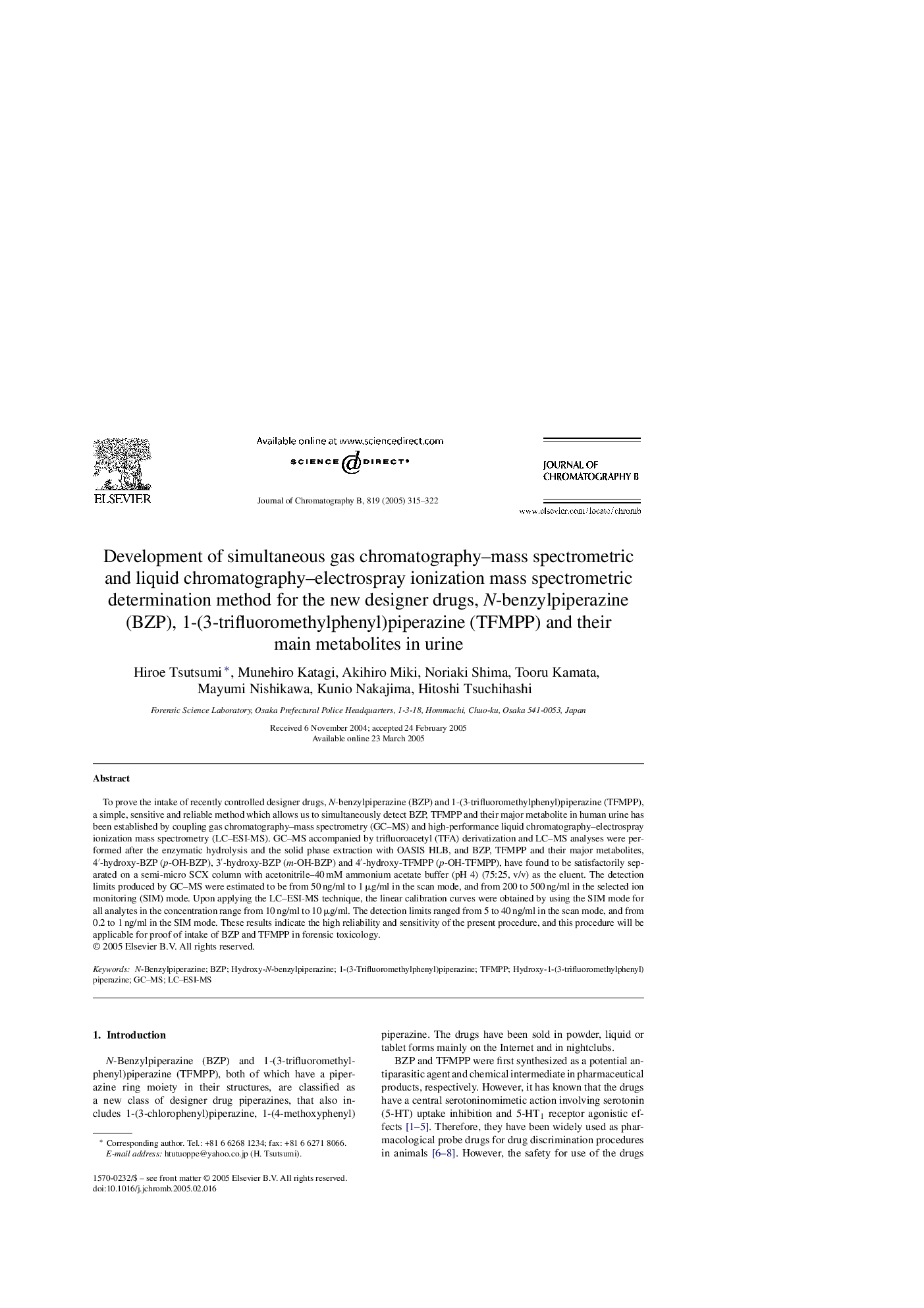| Article ID | Journal | Published Year | Pages | File Type |
|---|---|---|---|---|
| 10552350 | Journal of Chromatography B | 2005 | 8 Pages |
Abstract
To prove the intake of recently controlled designer drugs, N-benzylpiperazine (BZP) and 1-(3-trifluoromethylphenyl)piperazine (TFMPP), a simple, sensitive and reliable method which allows us to simultaneously detect BZP, TFMPP and their major metabolite in human urine has been established by coupling gas chromatography-mass spectrometry (GC-MS) and high-performance liquid chromatography-electrospray ionization mass spectrometry (LC-ESI-MS). GC-MS accompanied by trifluoroacetyl (TFA) derivatization and LC-MS analyses were performed after the enzymatic hydrolysis and the solid phase extraction with OASIS HLB, and BZP, TFMPP and their major metabolites, 4â²-hydroxy-BZP (p-OH-BZP), 3â²-hydroxy-BZP (m-OH-BZP) and 4â²-hydroxy-TFMPP (p-OH-TFMPP), have found to be satisfactorily separated on a semi-micro SCX column with acetonitrile-40 mM ammonium acetate buffer (pH 4) (75:25, v/v) as the eluent. The detection limits produced by GC-MS were estimated to be from 50 ng/ml to 1 μg/ml in the scan mode, and from 200 to 500 ng/ml in the selected ion monitoring (SIM) mode. Upon applying the LC-ESI-MS technique, the linear calibration curves were obtained by using the SIM mode for all analytes in the concentration range from 10 ng/ml to 10 μg/ml. The detection limits ranged from 5 to 40 ng/ml in the scan mode, and from 0.2 to 1 ng/ml in the SIM mode. These results indicate the high reliability and sensitivity of the present procedure, and this procedure will be applicable for proof of intake of BZP and TFMPP in forensic toxicology.
Related Topics
Physical Sciences and Engineering
Chemistry
Analytical Chemistry
Authors
Hiroe Tsutsumi, Munehiro Katagi, Akihiro Miki, Noriaki Shima, Tooru Kamata, Mayumi Nishikawa, Kunio Nakajima, Hitoshi Tsuchihashi,
